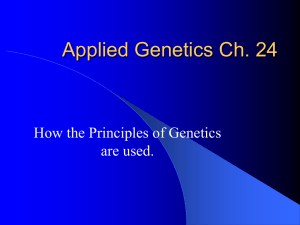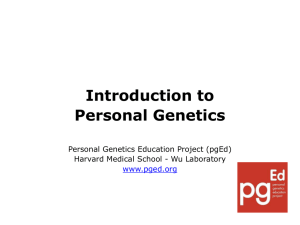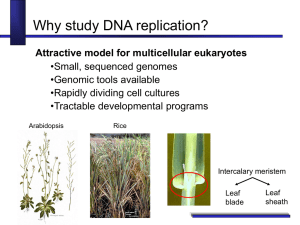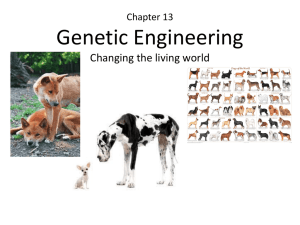6.3 Advances in Genetics
advertisement
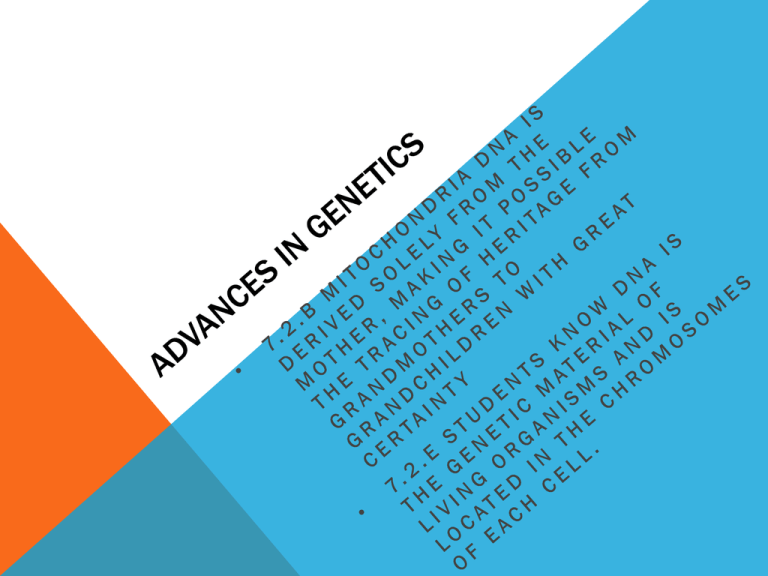
• Key concept: “Selective breeding, cloning, and genetic engineering are three methods for developing organisms with desirable trait.” • Selective breeding- the process of breeding organisms with desired traits • Inbreeding- crossing two individuals that have similar characteristics • Inbreeding increases the probability of having genetic disorders • Hybridization- breeders cross two genetically different individuals trying to get the best of both organisms SELECTIVE BREEDING CLONING • Clone- an organism that has the exact same genes as the organism from which it was produced • You can clone some plants easily because all you do is cut a piece off and plant itnew plant is genetically identical to the original plant • Animals are more difficult to clone, they take the nucleus out of a body cell and use it to produce a new animal GENETIC ENGINEERING • Genetic engineering- genes from one organism are put into the DNA of another • Genetic engineering can produce and improve medicines and foods. • Genes have been inserted into animals (example- creating blood clotting protein to help people with hemophilia • Genes have been inserted into plants (example- creating crops that are resistant to pesticides • Gene therapy- inserting copies of a gene into a human’s cells • Concerns about the long-term effects of genetic engineering (crops harm environment or health problems in people ) GENETIC ENGINEERING Scientists use genetic engineering to create bacterial cells that produce important human proteins such as insulin. LEARNING ABOUT HUMAN GENETICS • Key concept: “Applications of DNA technology include studying the human genome in detail and identifying people.” • Genome- all the DNA in one cell of an organism • DNA finger printing is used to show if people are related using • Except for identical twins every person has different DNA fingerprints • Scientists use mitochondrial DNA, because it is almost identical to the mother, to determine the person’s identity HUMAN GENOME PROJECT Project goals were to… • identify all the approximately 30,00035,000 genes in human DNA • determine the sequences of the 3 billion chemical base pairs that make up human DNA • store this information in databases • improve tools for data analysis Scientists now know the DNA sequence of almost every human gene Section 3: Advances in Genetics What are three ways of producing organisms with desired traits? What are two applications of DNA technology in human genetics?


